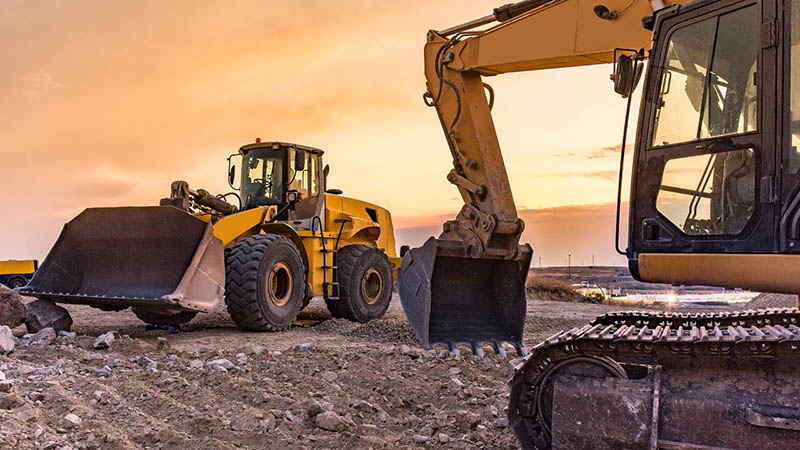A Comprehensive Guide to Construction Equipment Used in Zimbabwe
Zimbabwe’s construction industry, while facing challenges, remains a vital sector contributing significantly to the nation’s economic growth. The equipment employed in this industry reflects a blend of modern technology and older, more robust machines, adapting to the diverse geographical conditions and project scales across the country. This blog post provides a comprehensive overview of the types of construction equipment commonly used in Zimbabwe, categorized for clarity and understanding.
**I. Earthmoving and Excavation Equipment:**
This category forms the backbone of most construction projects, focusing on preparing the site and moving large volumes of earth.
* **Excavators:** These are indispensable for digging foundations, trenches, and other excavations. Zimbabwe utilizes a range of excavators, from smaller, compact models suitable for urban projects and confined spaces to larger hydraulic excavators capable of handling massive earthworks on large-scale infrastructure projects like dams and roads. Brands like Caterpillar, Komatsu, JCB, and Hitachi are commonly seen.
* **Bulldozers:** Essential for land clearing, grading, and moving large quantities of soil and rock. Their powerful blades and robust construction make them suitable for rough terrain. Both tracked and wheeled bulldozers find application, depending on the ground conditions and project requirements. Similar brands to excavators are prevalent here.
* **Backhoe Loaders:** Versatile machines combining the functions of a backhoe (for digging) and a front-end loader (for material handling). Their compact size and multiple functionalities make them popular for smaller projects and utility work.
* **Wheel Loaders:** Primarily used for loading and transporting materials such as soil, gravel, and aggregates. Their efficiency in loading trucks and moving materials around the site significantly accelerates project timelines.
* **Graders:** Used for fine grading of roads, leveling surfaces, and creating smooth slopes. They are crucial for road construction and site preparation, ensuring a level and stable base for subsequent construction phases.
* **Scrapers:** These self-powered machines are employed for large-scale earthmoving tasks, especially in projects involving significant volume removal and transportation. They are highly efficient for moving large quantities of earth over long distances.
**II. Material Handling and Transportation Equipment:**
Efficient material handling is key to productivity in construction.
* **Dump Trucks:** Essential for transporting excavated earth, aggregates, and other materials from one location to another. Their payload capacity varies depending on the project requirements, ranging from smaller trucks suitable for urban settings to larger articulated dump trucks for heavy-duty applications.
* **Forklifts:** Used for lifting and transporting pallets of materials, significantly improving material handling efficiency on site. Diesel, gasoline, and electric forklifts are used depending on project needs and environmental considerations.
* **Concrete Mixers:** These are crucial for preparing concrete on-site. Both stationary and mobile mixers are used, with the choice depending on the scale of the project and the quantity of concrete required.
* **Concrete Pumps:** For larger projects, concrete pumps are essential for efficiently placing concrete at higher levels or in hard-to-reach areas, accelerating the construction process.
* **Crane Trucks:** These versatile machines combine the lifting capabilities of a crane with the mobility of a truck, providing a flexible solution for lifting and placing materials during construction.
**III. Compaction Equipment:**
Ensuring proper compaction of soil and other materials is vital for structural integrity.
* **Rollers:** These machines, including smooth drum rollers, vibratory rollers, and pneumatic tired rollers, are used to compact soil, asphalt, and other materials, creating a stable and durable base for structures.
* **Plate Compactors:** Smaller and more maneuverable than rollers, plate compactors are ideal for compacting smaller areas and hard-to-reach spaces.
**IV. Specialized Construction Equipment:**
Beyond the standard equipment, specialized machines are often employed depending on project needs.
* **Pile Drivers:** Used for driving piles into the ground to create foundations for bridges, buildings, and other structures.
* **Cranes (Tower, Mobile, etc.):** Large-scale projects frequently utilize various types of cranes for lifting heavy materials and components. Tower cranes are commonly seen on high-rise construction, while mobile cranes offer flexibility for various lifting tasks.
* **Concrete Breakers:** Used for demolition and breaking up concrete structures.
* **Welding Machines and Cutting Equipment:** Essential for joining and shaping metal components.
**V. Challenges and Future Trends:**
The Zimbabwean construction industry faces several challenges, including access to financing, reliable spare parts, and skilled operators. The ongoing economic conditions influence the type and age of equipment employed, with older machines often favored for their affordability and resilience. However, a gradual shift towards newer, more efficient, and technologically advanced equipment is anticipated, driven by the need for increased productivity and adherence to higher safety standards. The adoption of more fuel-efficient and environmentally friendly equipment will likely also gain traction in the future.
This overview provides a comprehensive, albeit not exhaustive, list of construction equipment commonly used in Zimbabwe. The specific types and models employed vary depending on the project’s scope, location, and budget. As the country’s construction sector continues to evolve, the adoption and utilization of advanced technologies and equipment will play a crucial role in shaping its future.




